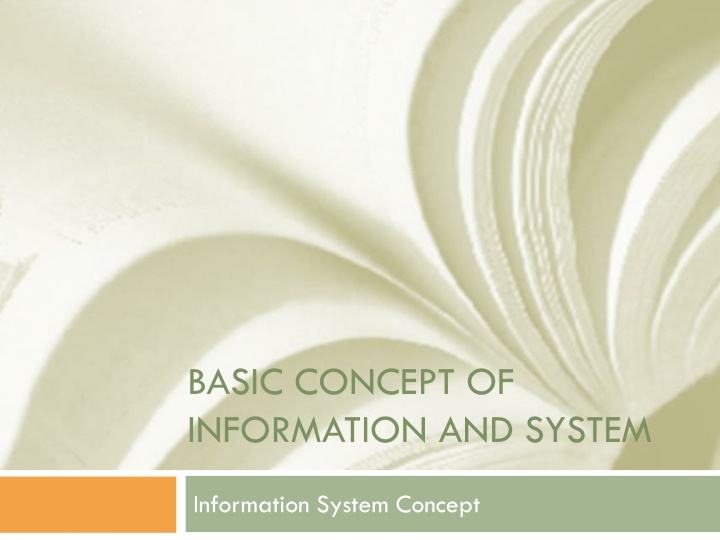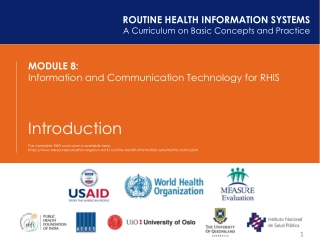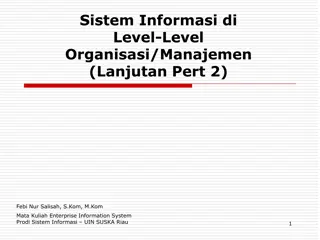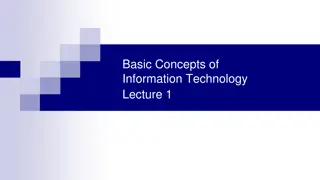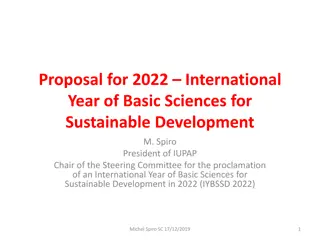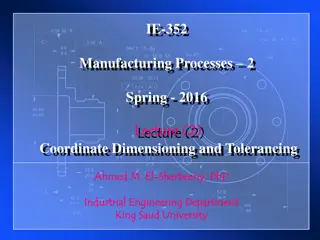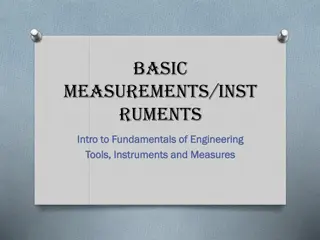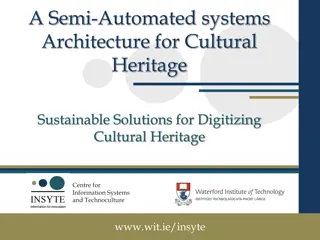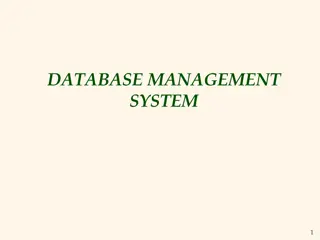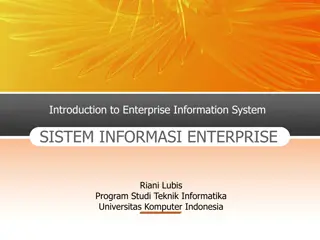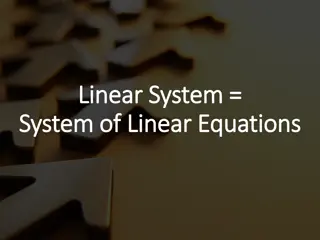Basic Concepts of Information Systems
Fundamental concepts of information systems is crucial for achieving organizational goals. Information systems are networks of procedures and interconnected components working together to reach specific objectives. These systems encompass both abstract and physical classifications, such as natural systems and man-made systems. Moreover, systems can be deterministic or probabilistic, closed or open, each with unique characteristics. Components within a system interact to form a unified whole, while the system's boundary delineates its scope. Explore the diverse facets of information systems through this comprehensive overview.
Uploaded on Apr 13, 2025 | 0 Views
Download Presentation

Please find below an Image/Link to download the presentation.
The content on the website is provided AS IS for your information and personal use only. It may not be sold, licensed, or shared on other websites without obtaining consent from the author.If you encounter any issues during the download, it is possible that the publisher has removed the file from their server.
You are allowed to download the files provided on this website for personal or commercial use, subject to the condition that they are used lawfully. All files are the property of their respective owners.
The content on the website is provided AS IS for your information and personal use only. It may not be sold, licensed, or shared on other websites without obtaining consent from the author.
E N D
Presentation Transcript
BASIC CONCEPT OF INFORMATION AND SYSTEM Information System Concept
System System Approach : Procedure A network of procedures in sequence of linked activities, gather together to achieve certain goals Element Set of interrelated components working together to achieve a particular goal
System Goals The purpose of a system is to achieve a goal or to reach objectives. Goal covers a wide scope, while objectives covering a narrow scope
System Classification Abstract Systems & Physical Systems System Abstract: The system of thought / ideas that do not seem physically. Example: theological systems. Physical Systems: Systems that are physically visible. Natural System & Man-Made Systems Natural systems: the system is going through a natural process and not man-made. Example: the earth's rotation system. Man-Made Systems: Systems that are designed by humans and involves the interaction between man and machine. Example: information systems
System Classification (2) Deterministic Systems and Probabilistic System Deterministic system: The system operates with a certain behavior that could be predicted, the interaction between the parts can be detected with certainty than the output can be predicted Ex : Computer System using program Probabilistic system System that the future conditions can not be predicted because it contains elements of probability. Example: Gambling
System Classification (3) Closed System and Open System Closed system: The system is not connected and are not affected by the external environment. This system works automatically without any intervening from the outside (in fact no system is completely closed) there is only a relatively closed system Open System: The system-related and affected by the external environment. This system accept input and produce output to the outside environment or other subsystems, so it should have good control systems
System Characteristic Component Consists of components that interact with each other and working together become a unity. The components can be composed of several subsystems / subsections, where each subsystem has a specific function and will affect the overall system. System Boundary An area which limits between one system to another system / with the outside environment. This system allows the boundary system is viewed as a limit of a system indicates the scope of the system
System Characteristic (2) External Environment System Anything beyond the limits of the system that affects the system operational . External environment can be both beneficial and detrimental. Favorable environment must be kept and maintained, otherwise adverse environment should be retained and controlled to compromised the viability of the system. Interface interface as media subsystem, which allows resources to flow from one subsystem to another subsystem. Output (output) of the subsystem will be input to other subsystems through liaison as well as to integrate subsystems become a unity
System Characteristic (3) Input Energy put into the system, can be maintenance input and signal input . Maintenance Input: the energy that entered to system to make system operate, meanwhile input signal is energy processed to obtain the output. For example, in the computer system, program as maintenance input is used to operate the computer and the data is input signal to be processed into information. Output Result of processed energy and classified as useful output and residual disposal. Output can be input for other subsystems.
System Characteristic (4) Processor A system can have a processing section that will transform inputs into outputs. A production system will process the input of raw materials and other ingredients into the output of finished goods. Accounting system will process the transaction data into financial reports and other reports required by management. Objectives A system can have a processing section that will transform inputs into outputs. A production system will process the input of raw materials and other ingredients into the output of finished goods. Accounting system will process the transaction data into financial reports and other reports required by management.
INFORMATION The data are processed into a form that is more useful and more meaningful for those who receive Something real / real half to reduce the degree of uncertainty about the state of things / events. For example: information that states that the value of the rupiah will rise, so will reduce the uncertainty about whether an investment will be made
Information Quality Relevance Information should provide benefits to the wearer. Relevance of the information for each person different from one another Accurate Information should be free from errors and not misleading and should clearly reflect the intent. Inaccuracies may occur because of resources (data) impaired / intent to destroy, to change the original data
Information Quality (2) Component of Accurate : Completeness Correctness Security
Information Quality (3) On Time The resulting information / needs should not be too late (obsolete). Outdated information does not have a good value, so if used as a basis for decision-making would be fatal / errors in decisions and actions Economics Information system costs will increase with time
Information Quality (4) Efficient How many units of production increased due to additional resources in the production process Trustworthy An important indicator of information system is to consider the problem of reliability Usefullness Nothing better than a system designed in accordance with criteria
Information Types Content Information is usually called by the main content or subject matter of the relevant information. The subject: about activity / particular field of activity, ranging from broad to narrow subject level. Form Information Description: In the story form with brief and clear sentences Recapitulation Information Image Information Model Information Statistic Information Form Information Animation Information Simulation Information 1. 2.
Information Types (2) Output Report Periodic Report On Request Report Exception Report Special Report Predictive Report Anwer of questions Ex : FAQ 3. 1. 2.
Information and Management Level Strategic Information For Top level and used for long time decision Tactical Information For Mid Level Technical Information For Low level
Information Values To help provide clarity of uncertainty or to reduce uncertainty so that people can make decisions with certainty and more profitable. The greater help to reduce the uncertainty the higher the value of the information.
Information Values (2) Information Values Characteristics : Accurate On Time Completeness Briefness Compatibility
Information Follow Up Communication Storage Retrieve Reproduction
